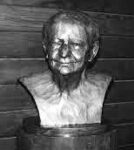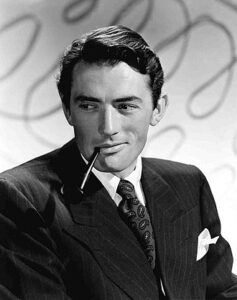 Editor’s Note: This is the 14th chapter of Volume 2 of Editor Emeritus Donald H. Harrison’s 2022 trilogy, “Schlepping and Schmoozing Along the Interstate 5.” All three books may be purchased from Amazon.com Harrison may be contacted via donald.harrison@sdjewishworld.com
Editor’s Note: This is the 14th chapter of Volume 2 of Editor Emeritus Donald H. Harrison’s 2022 trilogy, “Schlepping and Schmoozing Along the Interstate 5.” All three books may be purchased from Amazon.com Harrison may be contacted via donald.harrison@sdjewishworld.com
Schlepping and Schmoozing Along the Interstate 5, Exit 27 (Gilman Drive): Mandell Weiss Performing Arts Center
The La Jolla Playhouse is located at 2910 La Jolla Village Drive, but it may be accessed from the northbound Interstate 5 by turning left at the Gilman Drive/ La Jolla Colony Drive offramp; to a left on Scholars Drive South, to another left on Mandell Weiss Lane. The complex of theatres is located at the Joan and Irwin Jacobs Theatre District.


LA JOLLA, California — In his 102 years of life, Mandell Weiss didn’t get to do much acting, though he was a fan of the Yiddish and American theaters and always wanted to be on stage. In a well-deserved appreciation for him, the La Jolla Playhouse invited him to be part of the chorus in the restaurant scene of its 1987 production of Thornton Wilder’s The Matchmaker, directed by Des McAnuff. Weiss was 96 at the time.
McAnuff, who went on to a sterling career as a director on Broadway, had credited Weiss as the wonderful salesman who persuaded him to accept the job in 1983 at the La Jolla Playhouse’s artistic director.
Weiss made his fortune partnering with big box marketer Sol Price in FedMart. What was his connection to the La Jolla Playhouse, which resides on the grounds of the University of California San Diego?

That’s simple enough. In 1981, Weiss’s gift of $1.4 million helped finance the Mandell Weiss Theater, which opened in 1983 on the UC San Diego campus. That became the La Jolla Playhouse’s main theater with seating for 500 people. In 1988, Weiss – who reportedly was thrilled by his one-time bit part – agreed to donate another $1.3 million to build the Mandell Weiss Forum, giving the La Jolla Playhouse a second stage for its productions. Opened in 1992, the Forum seats an audience of 384.
The Joan and Irwin Jacobs Theatre District includes the two Mandell Weiss Theatres; the Hughes and Sheila Potiker Theatre for 417 audience members; the Theodore and Adele Shank Theatre for 100; the Molli and Arthur Wagner Dance Building, which encompasses three dance studios; and the Arthur Wagner Theatre seating 99 people. The various performance spaces are also used by UC San Diego’s drama and dance departments.
Besides being a theater patron, Weiss underwrote a chair for UC San Diego’s Judaic Studies Program and was a contributor to the United Jewish Fund, which today is know as the Jewish Federation of San Diego County.
The La Jolla Playhouse won a Tony Award in 1992 as the nation’s Outstanding Regional Theatre.

It is a playhouse with good yichus. It was started in 1947 by three movie stars – Gregory Peck, Dorothy McGuire and Mel Ferrer—with the financial backing of movie producer David D. Selznick, who was then best known for his 1939 blockbuster Gone With the Wind.
Peck had grown up in La Jolla. His father operated a drug store at 5th and Market Streets in downtown San Diego. He added in 1947 to his prestige as an actor in Gentleman’s Agreement – the Elia Kazan movie in which he played a Christian reporter posing as a Jew to uncover antisemitism. Peck undoubtedly had heard about, but never experienced, antisemitism as he came of age in La Jolla. Dorothy McGuire was one of his costars in Gentleman’s Agreement, along with John Garfield.
Making movies, with scenes shot over and over again, sometimes out of sequence is quite a bit different from acting on the legitimate stage, where you get just one take and if you get it wrong, you recover and keep going. Not wanting to lost that skill, Peck, McGuire and Ferrer hit upon the idea of brushing up on their techniques, away from the bustle of Hollywood. So, Peck approached La Jolla High School, where he was a student before attending UC Berkeley, and asked if his company of well-known actors might utilize the school’s auditorium, which had an arched proscenium.
Having secured a place for members of his Actors Company to perform, he needed to assure that he could pay them. Selznick kicked in $15,000 to get started and Peck, McGuire, and Ferrer arranged to meet with the leaders of the La Jolla Women’s Committee and the local Kiwanis Club. On his promise that the company’s productions would be worth the price of the tickets, the Women’s Club sold 60 percent of the subscription tickets, reportedly before any play was announced.
Although the pay was only $55 a week, plus hotel accommodations typically at La Valencia, top-flight movie stars were attracted by the romance of it all. In addition to the Peck-McGuire, Ferrer trio, hos is this for an alphabetical line-up of stars between 1947 and 1959? Robert Alda. Eve Arden. Tallulah Bankhead. Richard Basehart. Ann Blyth. Beulah Bondi. Harry Carey Jr. Leo J Carroll. Jackie Cooper. Wendell Corey. Joseph Cotton. Jane Cowl. Olivia de Havilland. Howard Duff. Jose Ferrer. Zsa Zsa Gabor. Gale Gordon. Charlton Heston. Miriam Hopkins. Dennis Hopper. J Patricia Huston. Jennifer Jones. Louis Jourdan. Eartha Kitt. Fernando Lamas. June Lockhart. Diana Lynn. Lee Marvin. Grouch Marx. James Mason. Raymond Massey. Rita Moreno. David Niven. Pat O’Brien. Vincent Price. Aldo Ray. Ginger Rogers. Barry Sullivan. Arthur Treacher. Vivian Vance. James Whitmore. Dame May Whitty. Fay Wray. Jane Wyatt.
And, those were just the actors on stage. There were many more in the audience. Lucille ball and Desi Arnaz spotted Vivian Vance during her 1951 performance in The Voice of the Turtle and subsequently decided she would be perfect to play Ethel Mertz in the television comedy series I Love Lucy.
The La Jolla Playhouse specialized in cutting edge drama and comedies that sometimes crossed boundaries of conventional taste. Reportedly, one play involving wife swapping was so risqué that Bill Kellogg Sr., who owned the La Jolla Beach & Tennis Club, staged a public walkout, notwithstanding the fact that from time-to-time Groucho Marx would host lunches at his club for 30 people.
Notwithstanding the Hollywood star appeal, the Playhouse fell out of favor. The Kiwanis Club withdrew its financial support. Local drama critics wrote increasingly negative reviews. The Playhouse stopped production in 1959 and did not return until 1983 when Des McAnuff agreed to give it a go. He served as artistic director until 1994, followed by Michael Greif and Anne Hamburger before McAnuff returned from 2000 to 2007. Christopher Ashley, the current artistic director, began his run in 2007.

Among plays that were developed at the La Jolla Playhouse and then went on to Broadway were Big River (1984); A Walk in the Woods (1989); Grapes of Wrath (1989); The Who’s Tommy (1992); How to Succeed in Business Without Really Trying (1994); An Almost Holy Picture (1995); Green Bird (1996); Jane Eyre (1999) and Thoroughly Modern Millie (2000).
Others were I Am My Own Wife (2001); Dracula, the Musical (2001); 700 Sundays: Billy Crystal, A Life in Progress (2004); Jersey Boys (2004); Zhivago (2006); The Farnsworth Invention (2007); Cry-Baby (2007); 33 Variations (2008); Memphis (2008); Bonnie & Clyde (2009); John Leguizamo: Diary of a Madman (2010), which was retitled as Ghetto Klown on Broadway; Jesus Christ Superstar (2012); Peter and the Starcatchers (2009); Limelight: The Story of Charlies Chaplin (2010), renamed as Chaplin on Broadway; Hands on a Hardbody (2012); Side Show (2013); Indecent (2015); Come from Away (2015); John Leguizamo: Latin History for Morons (2016); JUNK: The Golden Age of Debt (2016);; Escape to Margaritaville (2017); Summer: The Donna Summer Musical (2017); and Diana (2019).
The La Jolla Playhouse describes its mission as “telling stories that inspire empathy and create a dialogue toward a more just future … we are committed to being a permanent safe harbor for unsafe and surprising working, offering a glimpse of the new and the next in American theatre.”
*
Donald H. Harrison is editor emeritus of San Diego Jewish World. He may be contacted via donald.harrison@sdjewishworld.com